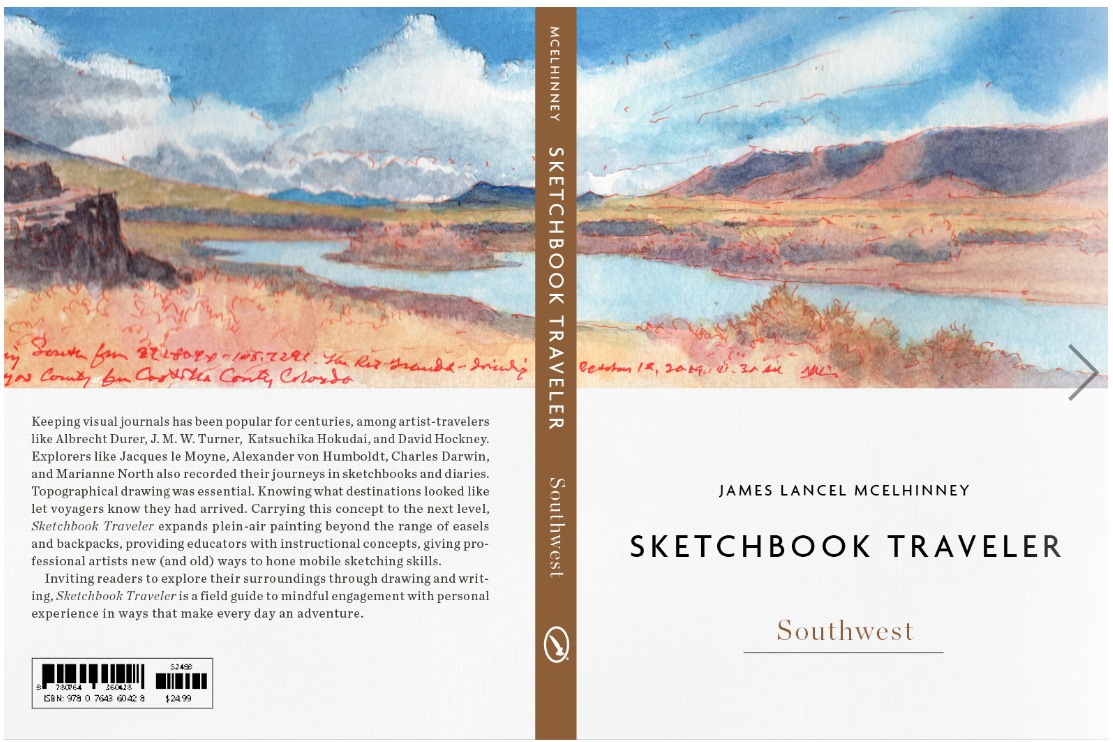Sneak peek at pages from Sketchbook Traveler New England, the third volume in the series from Schiffer Publishing. Projected publication date: Spring 2023
![]()
Journal painting: 3.5 x 10.5 inches. Watercolor and mixed media on paper.
During the colonial period, Rhode Island was the reigning seaport of the transatlantic slave trade. Just prior to the revolution it emancipated enslaved Rhode Islanders, which established a precedent for those living in bondage across New England to sue their masters for freedom. During the war of independence, Bristol and Newport became a nest of privateers that preyed on British merchantmen. During the years following the Civil War, Newport became a magnet for posh vacationers. Drawn to the rugged beauty of its rocky coastline and sandy beaches, landscape painters and maritime artists flocked to its shores. It was not by chance that artists such as Worthington Whittredge, James Suydam, William Trost Richards and John La Farge chose to set up their easels in the shadow of the Gilded Age cottages in which their patrons summered. Many of the painters’ motifs were popular destinations for picnics and hikes, such as Bishop’s Rock and Paradise Rocks. John Frederick Kensett; one of the most popular painters of the age, had pioneered a poetic offshoot of the Hudson River School later dubbed Luminism. Characterized by glowing light and tranquil settings, the Luminist style had deep roots in the maritime art of Gloucester’s Fitz Henry Lane, and Martin Johnson Heade’s haystack paintings of the Newbury-Essex salt marshes.

John Frederick Kensett. Beacon Rock. Oil in canvas 22.5 x 36 inches. 1857 National Gallery of Art. Washington DC. Kensett includes Fort Adams (seen on the left) which would not have been visible in this manner, from this point of view
One of Kensett’s painting locations was at the head of a tiny inlet to Benton Cove, looking toward a high, rocky ledge jutting into the water from the eastern shore. Rising ninety feet above the tide, Beacon Rock bonfires guided colonial mariners along the entrance channel, northeast into Newport Harbor. Kensett’s rendition of the site in the Metropolitan Museum of Art juxtaposes a dark plane of water against a fractured Olistostrome outcrop. Kensett’s vista is fictionalized for poetic effect. The cove I found was home to pleasure-boats, riding at anchor, in the shadow of a colonnaded mansion designed by Stanford White. Commissioned by Commodore Edward Morgan in 1887, completed in 1891, “The Acropolis of Newport” recently sold for 23 million dollars.

(A preview of SKETCHBOOK TRAVELER by James L. McElhinney (c) 2020. Schiffer Publishing).
Copyright James Lancel McElhinney (c) 2022 Texts and images may be reproduced (with proper citation) by permission of the author. To enquire, send a request to editions@needlewatcher.com
